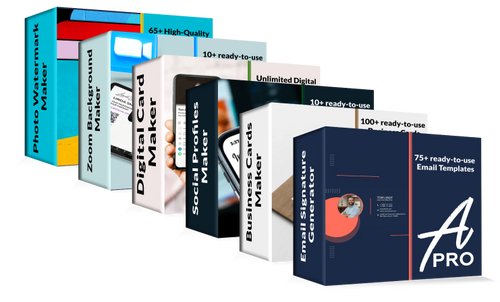Imagine a world where your marketing efforts seamlessly translate into tangible sales results. This isn't just a dream—it's the reality that content marketing can create. For entrepreneurs, marketing managers, and sales professionals alike, mastering the art of content marketing is key to driving sales and fostering long-term customer relationships. In this comprehensive guide, we'll explore the strategic steps that connect compelling content with increased revenue, empowering you to transform your marketing initiatives into a robust sales engine. Whether you're a seasoned marketing manager or a budding entrepreneur, you'll discover how to harness the full potential of content to drive measurable sales outcomes and propel your business forward.
What Is Content Marketing and Why Is It Important For Business?
Content marketing is a strategy technique meant to produce and distribute consistent, valuable, relevant material to attract and involve a clearly defined audience, hence promoting profitable consumer action. It is crucial for companies as, instead of promoting goods or services, it creates trust and credibility with possible consumers by offering them intelligent and useful knowledge. This approach improves brand awareness and loyalty as well as leads through the sales process, therefore raising conversion rates and client retention. Companies that properly differentiate themselves in a crowded market by matching content with consumer requirements and corporate goals will create a competitive edge and experience ongoing development.
How Content Marketing Drives Sales
Step 1: Define Your Target Audience
The first step in leveraging content marketing to drive sales is to clearly define your target audience. Knowing your ideal clients helps you to create your material to fit their particular requirements, tastes, and problems. Developing thorough buyer personas helps you to make sure your material appeals to the correct audience, therefore increasing the likelihood of including and guiding them across the sales process.
Step 2: Develop a Content Strategy
Once you have a clear understanding of your audience, the next step is to develop a comprehensive content strategy that drives sales. This involves setting clear objectives, such as increasing brand awareness or generating leads, and determining the ways and types of content that will best achieve these goals. Whether it's blog posts, videos, infographics, or social media updates, your content should be aligned with your business objectives and designed to move prospects closer to a purchase decision.
Step 3: Create High-Quality, Relevant Content
Captivating your audience and building your brand as a reliable authority in your field of business depend on producing excellent, pertinent material. Emphasize creating materials that answer the issues and questions your readers have by including insightful analysis and value-adding answers. This not only fosters confidence but also helps your business to be a preferred source, so raising the possibility of turning leads into consumers.
Step 4: Distribute and Promote Your Content
Effective distribution and promotion are key to ensuring your content reaches your target audience. Utilize various channels such as social media, email marketing, and SEO to amplify your content's reach. By strategically promoting your content where your audience is most active, you can drive more traffic to your website, increase engagement, and generate more qualified leads.
Step 5: Engage and Nurture Leads
Once your content has attracted potential customers, the next step is to engage and nurture these leads. Use personalized follow-ups, targeted email campaigns, and interactive content to maintain interest and guide prospects through the buyer's journey. By providing ongoing value and addressing any concerns, you can build stronger relationships and move leads closer to making a purchase.
Step 6: Measure and Optimize
The final step in driving sales through content marketing is to measure the effectiveness of your efforts and optimize accordingly. Use analytics tools to track key performance indicators such as website traffic, conversion rates, and customer engagement. By analyzing this data, you can identify what's working and what needs improvement, allowing you to refine your strategy and maximize your content's impact on sales.
How Does Branding Relate To Content Marketing?
Content marketing is a great means of communicating and strengthening the identity, values, and promise of a brand, hence branding and content marketing are naturally connected. By means of constant and smart content development, companies may convey their own brand story, build a different voice, and create an emotional link with their audience. This alignment guarantees that every bit of material not only educates and interacts but also matches the brand's values, therefore strengthening brand recognition and loyalty. Companies may set themselves apart in the market, establish trust with customers, and produce a coherent brand experience that generates consumer loyalty and, eventually, sales by including branding into content marketing initiatives.
What Type Of Content Is More Likely To Convert For Each Channel?
Website
- Blog Posts: In-depth articles that address customer pain points and provide valuable insights, optimized for SEO to attract organic traffic.
- Landing Pages: Targeted pages with clear calls-to-action (CTAs) designed to capture leads or drive specific actions.
- Case Studies: Success stories that demonstrate the effectiveness of your products or services, building trust and credibility.
- Testimonials and Reviews: Social proof that reassures potential customers about the quality and reliability of your offerings.
Social Media
- Short Videos: Engaging and easily digestible content that captures attention quickly and encourages sharing.
- Infographics: Visually appealing graphics that simplify complex information and are highly shareable.
- User-Generated Content: Authentic content created by customers, which can enhance trust and community engagement.
- Interactive Posts: Polls, quizzes, and contests that encourage participation and increase engagement.
Email Marketing
- Personalized Newsletters: Tailored content that addresses the specific interests and needs of subscribers, fostering a deeper connection.
- Exclusive Offers: Time-sensitive promotions or discounts that create urgency and encourage conversions.
- Educational Content: Guides, tips, and resources that provide value and establish authority, nurturing leads through the sales funnel.
- Automated Drip Campaigns: A series of strategically timed emails that guide prospects through the buyer's journey.
Video Platforms
- Product Demos: Detailed demonstrations that showcase the features and benefits of your products, helping potential customers visualize their use.
- Customer Testimonials: Video testimonials that provide authentic endorsements and build trust.
- How-To Videos: Educational content that offers solutions to common problems, positioning your brand as a helpful resource.
- Live Streams: Real-time interactions that allow for direct engagement and immediate feedback from your audience.
Podcasts
- Expert Interviews: Conversations with industry leaders that provide valuable insights and establish authority.
- Storytelling Episodes: Engaging narratives that connect emotionally with listeners and reinforce brand identity.
- Educational Series: In-depth explorations of topics relevant to your audience, offering actionable advice and fostering loyalty.
- Q&A Sessions: Interactive episodes that address listener questions, building community and trust.
How Can Automation Support Content Marketing Sales?
Automation can significantly enhance the effectiveness of content marketing in driving sales by streamlining processes, personalizing customer interactions, and optimizing resource allocation. Through automated tools, businesses can efficiently manage and distribute content across multiple channels, ensuring consistent messaging and timely delivery. Automation enables personalized marketing at scale, allowing for tailored content recommendations and targeted email campaigns that resonate with individual customer preferences and behaviors. This personalized approach not only nurtures leads more effectively but also accelerates the sales cycle by delivering the right content at the right time. Additionally, automation provides valuable insights through data analytics, helping marketers refine their strategies and focus on high-impact activities. By leveraging automation, businesses can maximize their content marketing efforts, improve lead conversion rates, and ultimately drive greater sales success.
Conclusion
In conclusion, content marketing is a transformative force that, when strategically aligned with sales objectives, can propel businesses toward unprecedented growth and success. By understanding your audience, crafting a robust content strategy, and leveraging the power of automation, you can create meaningful connections that guide prospects through the sales funnel with precision and impact. As you measure and optimize your efforts, the insights gained will empower you to continuously refine your approach, ensuring that your content not only captivates but also converts. Embrace the potential of content marketing to drive sales, and watch as your business thrives in the competitive digital landscape. Ready to boost your sales? Start aligning your content marketing strategy with your sales goals today!
Final Thoughts
Want your brand to leave a lasting impression? Artlogo offers personalized branding solutions, from unique handwritten signatures to professional business cards and eye-catching social media icons. Our talented designers are committed to ensuring your business shines. Find out how Artlogo can elevate your brand today.
Sources






























Share to: